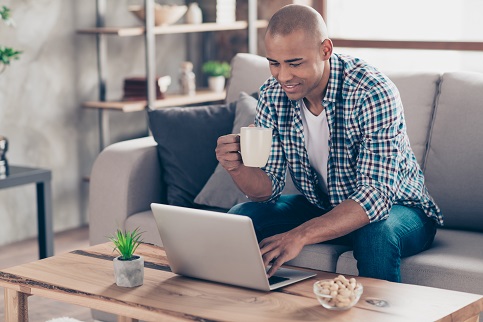Depending on your financial goals, refinancing your mortgage loan could give you a lower interest rate, a smaller monthly payment, or a longer – or shorter – loan term. But what if you’ve already refinanced your home in the past? Can you do it again?
The short answer is yes. Let’s explore how many times you can refinance your home mortgage and some reasons it may or may not be wise to refinance again.
How Many Times Can You Refinance Your Home?
There’s no exact limit on the number of times you can refinance your home. However, you’ll need to meet your lender’s specific requirements for refinancing every time. These requirements include having enough equity in your home. For a cash-out refinance, most lenders require that borrowers have at least 20% equity in their home before they can refinance their mortgage. For rate and term refinancing, you might not need as much. Keep in mind that if you don’t have much equity, you probably won’t be able to get the kind of refinance you want.
How Much Does It Cost Each Time You Refinance A Mortgage?
Several factors will determine the cost of refinancing your mortgage. On average, you can expect to pay 2% – 6% of your loan amount in closing costs each time you refinance. Closing costs are the fees you pay to your lender and third-party providers – such as title insurers, appraisers and real estate attorneys – to originate your refinance.
Your closing costs will vary depending on the size of your mortgage and the state and county where you live. You might be able to roll your closing costs into your new loan instead of paying them upfront, but they’re an important fee to consider either way.
Cost Of Refinancing Example
Let’s suppose you’re refinancing to a loan of $250,000. If your closing costs are $5,000, you can add those to your loan amount instead of paying for them upfront. This means you’d pay back a mortgage of $255,000 instead of $250,000.
The cost of a refinance is one reason it might not be worth refinancing too many times. If you can’t reduce your interest by much, you might not save enough to offset those closing costs and ultimately end up with more money in your pocket.
See What You Qualify For
Buy A Home
Discover mortgage options that fit your unique financial needs.

Refinance
Refinance your mortgage to have more money for what matters.
Tap Into Equity
Use your home’s equity and unlock cash to achieve your goals.
Reasons Why You Might Refinance Multiple Times
Why would you want to refinance your mortgage loan more than once? There are several reasons. Here are the common ones among homeowners.
For A Lower Interest Rate
Most homeowners refinance to get a lower interest rate with their mortgage. That’s because when you lower your mortgage loan’s interest rate, you’ll drop your monthly payment (unless you also switch to a shorter term), saving you potentially thousands of dollars a year. That can add up to real savings.
Mortgage interest rates can rise and fall several times during the life of your mortgage. This means you might need to refinance more than once to end up with the lowest possible interest rate. While there isn’t necessarily a limit to how many times you refinance, you will eventually reach a point where rates begin to rise again and refinancing wouldn’t be beneficial.
For A Longer Or Shorter Loan Term
You might refinance a long-term mortgage loan such as a 30-year fixed-rate mortgage to one with a shorter term, such as a 15-year fixed-rate mortgage. If you do, you’ll reduce the amount of interest you pay over the life of your loan, potentially saving yourself tens of thousands of dollars.
You might also go the opposite way, refinancing a shorter-term loan – such as a 15-year, fixed-rate mortgage – into one with a longer term, such as 30 years. This will lower the amount you pay each month because you’re stretching out your mortgage payments over a longer time. As a result, you’ll enjoy some financial relief if you’re struggling to pay your bills each month. You’ll pay more in interest over the long haul, though.
To Change Your Loan Type
You can also refinance into a different type of mortgage loan. Maybe you have an adjustable-rate mortgage that’s about to enter its adjustable phase. During this phase, your interest rate will increase or decrease depending on market factors. That means your monthly payment could rise during this period.
To avoid the uncertainty that comes with rising or falling interest rates, some homeowners refinance out of their adjustable-rate mortgage to a fixed-rate mortgage where the interest rate never changes. A fixed-rate loan makes it easier for homeowners to budget for their monthly mortgage payments.
To Borrow Against Your Equity
With a cash-out refinance, you borrow against the equity in your home. You might owe $200,000 on your mortgage but refinance that loan for $250,000. You’d then receive the extra $50,000 as a lump sum that you can spend on virtually anything.
Keep in mind: Instead of paying back $200,000, you now must pay back $250,000, with interest.
Ready to refinance?
See recommended refinance options and customize them to fit your budget.
Factors To Consider Before Refinancing Your House Again
If you’re thinking of refinancing again, here are a few suggestions to ponder before moving forward.
Closing Costs
Refinancing isn’t free, and the closing costs your lender charges can add up. Determine if refinancing will save you enough money each month or reduce enough of the interest you’ll owe to make these fees a worthwhile expense.
Lost Equity
Building equity is a key benefit of owning a home. Equity is the difference between what you owe on your mortgage loan and what your home is worth. If you owe $100,000 on your mortgage and your home is worth $200,000, you have $100,000 in equity. You can then borrow against that equity in the form of a home equity loan, home equity line of credit (HELOC) or cash-out refinance, using the money from these loans for pretty much whatever you want but erasing much of the equity you’ve earned.
Equity is also important when you sell: The more equity you have, the more likely you are to earn a solid profit from the sale.
Prepayment Penalties
Some loans come with a prepayment penalty if you pay off your mortgage too soon. Refinancing your mortgage counts as paying it off. Under current laws, if you took out a mortgage after January 2014, your lender is allowed to charge a prepayment penalty of up to 2% of your loan’s remaining balance if you pay off your loan within 2 years.
If you pay off your mortgage within the first 3 years, your lender can charge up to 1% of your loan’s outstanding balance as a prepayment penalty. Your lender can’t charge anything if you pay off your loan after 3 years.
If your lender charges prepayment penalties – many won’t – keep this fee in mind when determining whether a refinance is worth it.
FAQs: Refinancing Multiple Times
Below are a few frequently asked questions about how many times you can refinance your mortgage.
How often can I refinance my home?
There’s technically not a limit on how many times you can refinance your mortgage. Keep in mind, though, that you’ll have to meet a mortgage lender’s refinance requirements, which will include having a certain amount of equity in your home, each time you refinance.
Is it a good idea to refinance multiple times?
Refinancing your mortgage can be a smart financial decision in some instances. If you find a lower interest rate, want to switch to a longer or shorter loan term, or want to switch to a different type of home loan or borrow against your home equity, it might be a good idea to refinance again.
Most importantly, whether it’s best to refinance your home again depends largely on your unique financial situation and needs.
How soon after refinancing can I refinance again?
The amount of time you’ll have to wait between when you take out your original mortgage and when you refinance for the first time will vary based on the type of mortgage you currently have and the type of refinance you’re seeking. If you’ve already been through the refinance process and are looking to refinance again, the length of time you’ll need to wait will likewise be circumstantial. Check with your current lender, and any new lender you may be looking to refinance with, for clarity.
Along with shedding light on when you can refinance, a lender can provide insights on your refinancing options and whether refinancing again is a good move for you.
The Bottom Line: Refinancing Your Home Multiple Times Can Be Wise In Some Cases
Refinancing your home more than once can make financial sense if you can lower your interest rate or change your loan’s term to provide financial relief. But before you take on multiple refinances, determine whether the costs of refinancing – in fees and in lost equity – are worth the benefits you’ll receive.
Ready to refinance?
See recommended refinance options and customize them to fit your budget.

Dan Rafter
Dan Rafter has been writing about personal finance for more than 15 years. He's written for publications such as The Washington Post, Chicago Tribune and Wise Bread.












